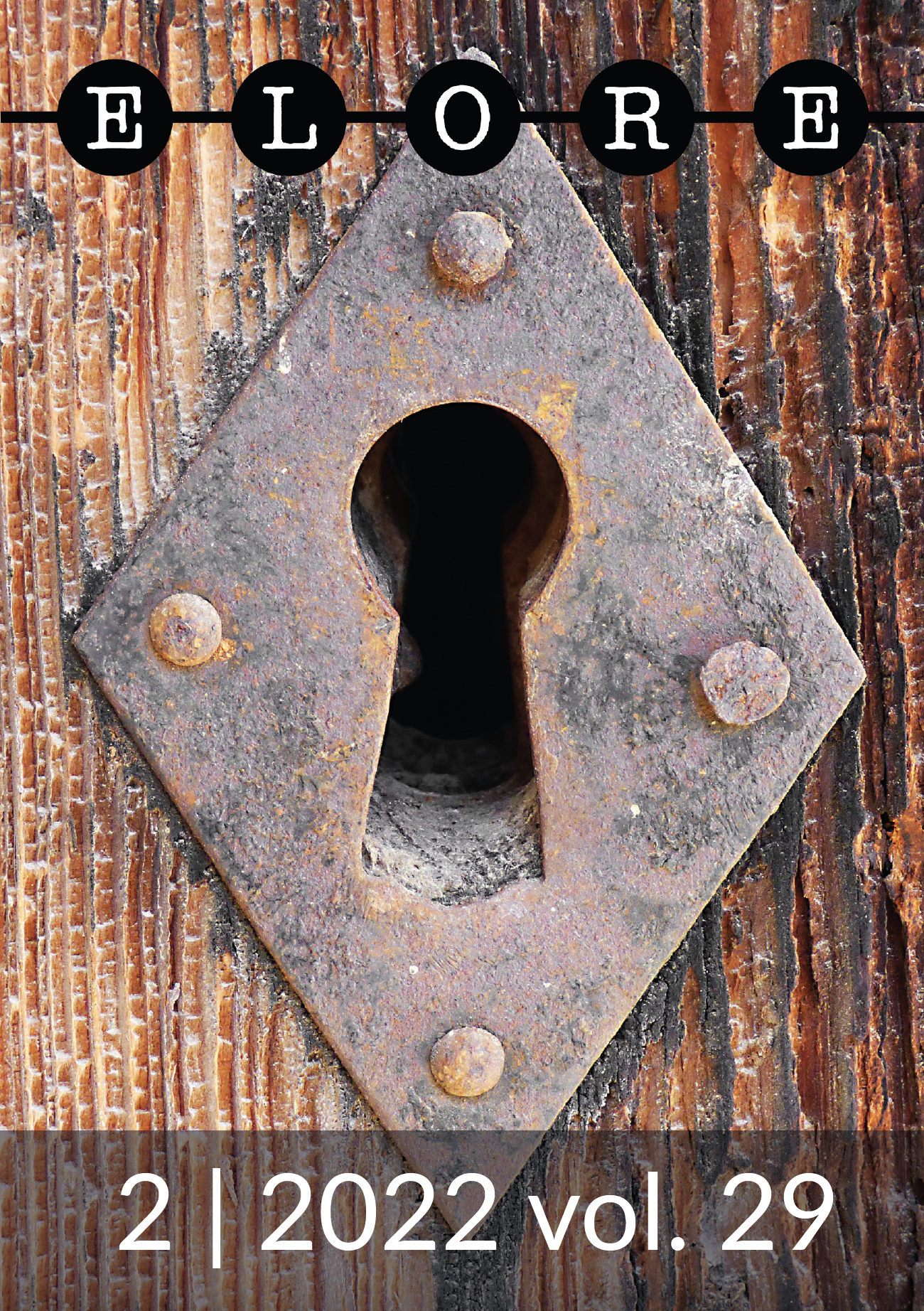In the interface of body, images and impressions, and tradition
A case study of emotions in contemporary lament performances as music and performing arts
DOI:
https://doi.org/10.30666/elore.121298Keywords:
laments, folk music, emotions, affective practice, collaborative methodsAbstract
In the article, we, a folklorist and a musician-lamenter, focus on the emotions of contemporary laments in Finland. This case study concentrates on the views and experiences of one lamenter, a folk musician and artist, Emmi Kuittinen, however, we discuss these also in relation to the entire lament tradition. Our main question is: What are emotions in the contemporary laments as performing arts? We address the question from three perspectives: How does a contemporary lamenter understand the emotions of laments? How do emotions form and are formed in lament performances? How do emotions build a connection with the past and tradition? We approach emotions as affective practices: emotion is seen as socio-culturally formed bodily experience and meaning-making processes. The emotions in laments are expressed, experienced, and conveyed; they appear in texts, sounds, gestures, and experiences, as earlier research has shown.
The lament tradition in contemporary Finland is based on the Karelian and Ingrian (Izhorian) traditions. The originally oral ritual tradition lives in the present also in written form and most often in other than ritual situations. To discuss the various representations, practices and meanings of laments and lamenting in an ethically responsible way and to avoid anachronistic interpretations, we use two separate terms: Traditional lament refers to the historical (but not only historical) lament practices. Contemporary lament or neo-lament refers to the new interpretations, representations, and practices. This rough and simplified categorization is a tool for discussing the varied phenomena.
The article follows the methodological trends that emphasize the collaboration between the informant and the researcher. In the article, text written by the lamenter and text by the researcher are side by side. The lamenter writes autobiographically and the researcher analyses the written narration in the light of the theoretical framework and research history. The background of the writing is in ethnographic interviews and observation. Some media interviews, Kuittinen's published laments and performances in concerts are employed as supplementary material. The research frame, analyses and results have been discussed together.
Lamenter's understanding about the emotions of laments stems from earlier lament research and written descriptions, from the lament recordings in the archives and from her own experiences in everyday life and as a lamenter. The emotion arises in the interface of the subject of the lament, images and impressions, performance, and body. For Emmi Kuittinen especially the bodily elements, like imitating actual crying by wrinkling her face and changing her breathing, are important tools when creating the emotion into the performance. From the point of the continuum of the lament tradition, the emotion appears as a link between different times and different socio-cultural contexts. Kuittinen relates to the emotional content of the archival material, and in general with the tradition music she feels she is just one small part of the chain of generations. This kind of connecting with the tradition and the past lamenters can be viewed also in the light of historical empathy.

Downloads
Published
How to Cite
Issue
Section
License
The journal follows Diamond Open Access publishing model: the journal does not charge authors and published texts are immediately available on the Journal.fi service for scientific journals. By submitting an article for publication on Elore, the author agrees, as of September 2024, that the work will be published under a CC BY 4.0 licence. Under the licence, others may copy, transmit, distribute and display the copyrighted work and any modified versions of the work based on it only if they attribute the licence, the original publication (link or reference) and the author as the original author. Any modifications made must be acknowledged.
Copyright of the texts remains with the authors, and self-archiving (Green OA) of the published version is allowed. This also applies to texts published before September 2024. The Green OA publication must include Elore's publication details.
The metadata for published articles is licensed under Creative Commons CC0 1.0 Universal.





